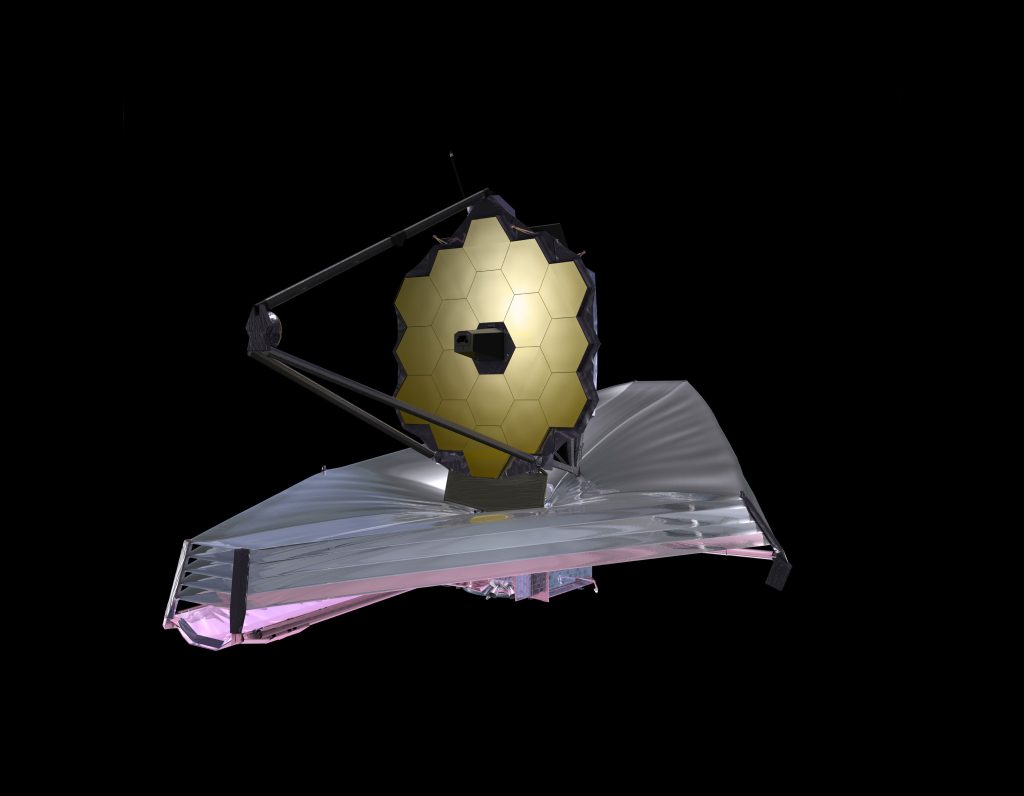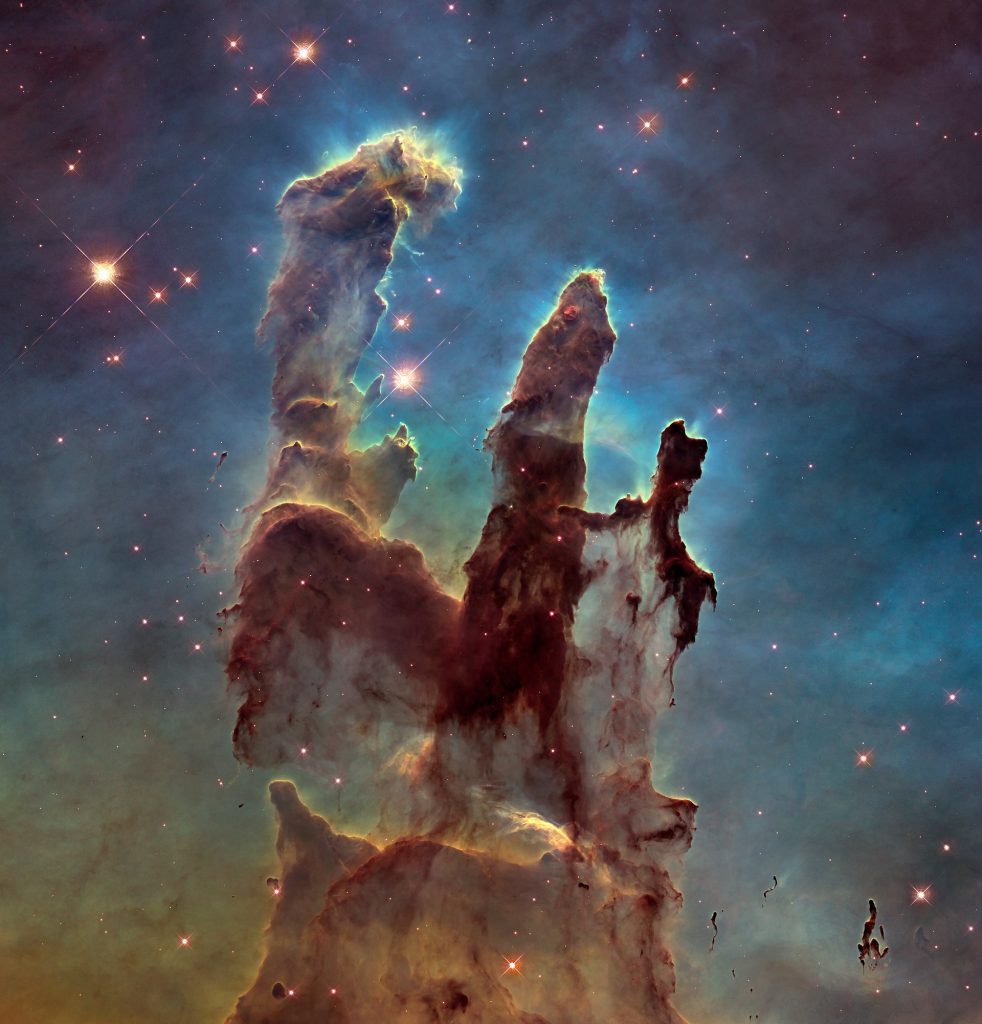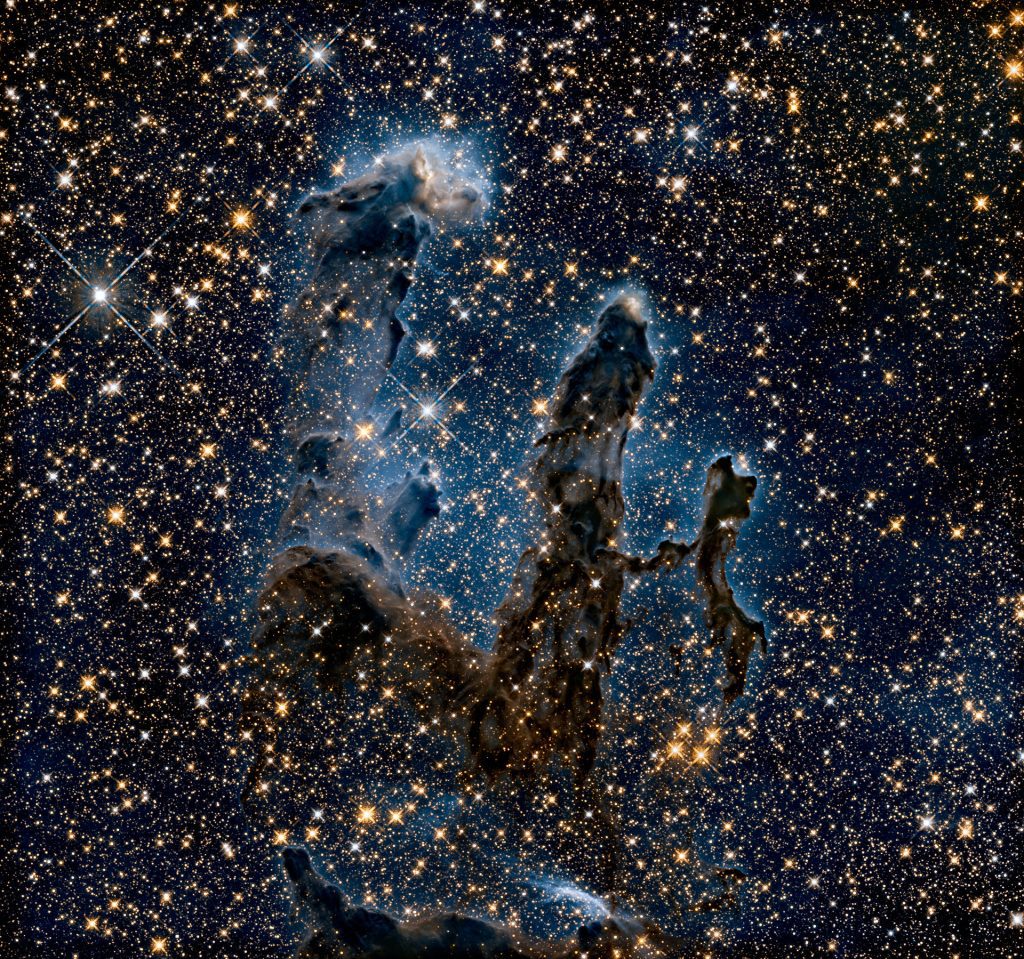
JAMES WEBB SPACE TELESCOPE: SCIENTIFIC MISSION
Hi, I’m Marley, the astronomer here at the Space Centre.
This month, and barring any last-minute complications, the James Webb Space Telescope (JWST) will launch on December 22nd. In this blog post I want to talk a little bit about what science we can expect from JWST. If you missed last month’s blog about the JWST check it out here.
JWST’s secret power comes from its ability to look in the infrared part of the electromagnetic spectrum. It is true that some objects emit in the infrared and visible parts of the spectrum – like fire. But some astronomical objects only emit in the infrared, or any signals in the visible range are blocked by things like dust. Having a telescope that can see this radiation can unlock new mysteries about our Universe.
JWST has four key science themes:
The Early Universe
When it comes to the early Universe, we actually have not seen the first stars and galaxies that have formed. Previous science shows that there are heat signatures left over from the Big Bang, and about 380,000 years after it was formed. The Universe was very dark back then, but those heat signatures could be the beginnings of the first stars. If you think about it, the light from those first stars has travelled billions of years to reach us today. This travelling causes that light to stretch, and it shifts from visible light, to infrared light because of this.
Galactic Evolution
We know that there are many different shapes to galaxies, but we are not sure why they are shaped the way they are, or how that shape may change after time. Galaxies like our own, spiral galaxies, are formed after billions of years. When scientists look back at younger galaxies, we see galaxies that are small and clumpy, with knots of star formations. How these clumps grow into spirals, and what spirals may evolve into next and how, is a key question for many astronomers.
Stellar Lifecycles
Look at the two photos of the famous Pillars of Creation in the Eagle Nebula. In the visible light image, captured by Hubble, we see a beautiful structure of dust. But hidden behind those pillars of dust are hundreds of stars! The second image, taken by Hubble in the near-infrared, shows the stars hidden behind the dust. Hubble is not specialized to take photos in the infrared – so imagine what JWST could do! And it’s not just nebulas where dust hides things astronomers want to look at. Dusty areas in galaxies may obscure areas of stellar formation, and young stars have large dust discs around them. These protoplanetary discs around the stars may contain secrets to the beginnings of planetary formation.
Visible light
Credit: NASA, ESA, and the Hubble Heritage Team (STScI/AURA)

Infrared
Credit: ESA/Hubble

Other worlds
To find exoplanets, astronomers use what is called the transit method. This method involves looking at a star and identifying dips in the light. Dips that happen repeatedly could be planets. Once a planet is confirmed, Webb will look at the planet’s atmosphere using a method called spectroscopy. Spectroscopy is measuring the intensity of light at different wavelengths. Astronomers can graph this intensity, and at times there may be dips in an otherwise straight line. These dips are absorption lines. Elements and molecules in the atmosphere of the planet absorb the light of the star as it passes through the atmosphere. This only happens at specific energies, corresponding to specific elements and molecules. At infrared wavelengths, the molecules scientists are interested in have the greatest number of spectral features. This makes an infrared telescope like JWST perfect for the job.
Hopefully, all will go well with the launch this month. Check for updates from the JWST website for the latest information about the launch. Good luck JWST!
Astronomers Playlist
Time
Activity
60 mins
Early Universe
Read more about the early universe and the role JWST will play in looking for answers. Some of the most familiar scientists in history have been involved in the quest to understand the nature of the universe. Visit NASA’s Cosmic Times to discover more about the scientists involved and their discoveries over the last 100 years. Contribute to our understanding of the history of astronomical discoveries by helping to transcribe the notebooks of some of the early Harvard Computers (the team of women involved in processing astronomical data).
Ask yourself: What do you think has been the most important discovery about our universe in the past 100 years?
45 mins
Galactic Evolution
Read more about galactic evolution and the role JWST and the key questions scientists are asking. Watch this short video showing the Hubble Ultra Deep Field, looking back in time to see how galaxy structure changes over time. Contribute to scientists’ understanding of how galaxies form by helping to identify galaxies according to shape with the citizen science project, Galaxy Zoo.
Ask yourself: If you were on the science team, which of the key questions would you be interested in answering
30 mins
Stellar Lifecycles
Read more about the life cycle of stars and the role JWST will play in understanding star formation. Read more about infrared, the part of the electromagnetic spectrum that JWST works in and then examine these objects in both infrared and visible light.
Ask yourself: What becomes more visible in infrared compared to visible light?
60 mins
Other Worlds
Read more about exoplanets and the role JWST will play in the search for these other worlds. Read our blog about exoplanets and try some of the other activities included in our blog. Help scientists search for newly forming planets in the citizen science project, Disk Detective.
Ask yourself: The JWST mission is asking lots of questions about other worlds in their key questions. Which do you think are the most important to answer?

